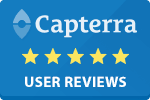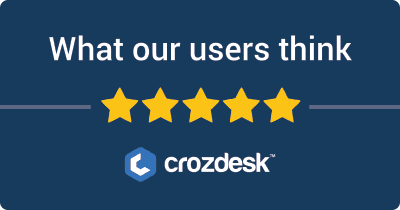
HubSpot and Moosend are two popular email automation software tools designed to enhance marketing efforts through efficient communication strategies.
Main Purposes:
- HubSpot: A comprehensive inbound marketing platform that integrates email marketing with CRM, lead management, analytics, and more.
- Moosend: A straightforward email marketing solution focused primarily on automation, providing tools for creating and managing email campaigns.
Why Users Consider These Tools:
- HubSpot: Preferred for its extensive features, integration capabilities, and CRM functions, making it ideal for businesses looking for an all-in-one solution.
- Moosend: Chosen for its affordability and simplicity, appealing to small businesses and startups seeking effective email marketing without the complexity of broader marketing tools.
Primary Comparison Aspects:
- Features: Examine the breadth and depth of automation tools, design capabilities, and integrations available in each platform.
- Pricing: Analyze cost structures, including free trials and subscription plans to determine value for money.
- Ease of Use: Consider the user interface, learning curve, and support resources that affect user experience.
By comparing these aspects, users can effectively identify which tool aligns best with their email marketing needs and organizational goals.
HubSpot VS Moosend: Which tool is the most popular?
| Tool | Number of Reviews | Average Rating | Positive Reviews | Neutral Reviews | Negative Reviews |
|---|---|---|---|---|---|
| HubSpot | 249 | 2.49 | 94 | 6 | 149 |
| Moosend | 10 | 5.00 | 10 | 0 | 0 |
HubSpot is the most reviewed tool with a total of 249 reviews but has a low average rating of 2.49. The majority of the reviews are negative, indicating significant user dissatisfaction.
Moosend, on the other hand, is the least reviewed tool with only 10 reviews, yet it boasts a perfect average rating of 5.00, reflecting complete user satisfaction.


HubSpot and Moosend: Quick Comparison Overview
| Feature/Aspect | Ahrefs | SEMrush |
|---|---|---|
| Primary Features | – Site Explorer – Keyword Explorer – Backlink Checker – Content Explorer – Rank Tracker |
– Keyword Research – Site Audit – Position Tracking – Content Analyzer – Marketing Insights |
| Target Audience | – SEO professionals – Digital marketers – Agencies focusing on content marketing and backlink analysis |
– Digital marketers – SEO experts – Content marketers – Social media marketers and PPC specialists |
| Main Advantages | – Robust backlink analysis – Comprehensive keyword data – Intuitive user interface – Constantly updated index |
– All-in-one digital marketing tool – Extensive competitor analysis – Wide array of tools for SEO and PPC – Integrated social media management |
| Core Value Proposition | Focused on providing in-depth SEO insights, particularly strengths in backlink profiles and organic keyword rankings. Ideal for users prioritizing content strategy and link-building efforts. | Offers a holistic view of digital marketing, making it easier to manage all aspects of online presence through an extensive range of tools for SEO, PPC, and social media marketing. |
| Ideal Use Cases | – Conducting comprehensive link audits – Developing effective content strategies – Tracking backlinks and organic rankings – Keyword planning for SEO campaigns |
– Managing and optimizing PPC campaigns – Conducting competitive analysis for market positioning – Comprehensive content analytics and SEO tracking – Social media metrics and management |
Most liked vs most disliked features of HubSpot and Moosend
| Platform | Most Liked Features | Most Disliked Features |
|---|---|---|
| HubSpot | – Powerful customization capabilities tailored to specific business needs. – Commendable free version offering significant value for small businesses. – Easy navigation for basic functions aiding initial onboarding. |
– Frustration with customer service, citing poor communication and unhelpful responses. – Deceptive pricing model leading to quick cost escalation. – Aggravation around auto-renewals and unexpected charges for exceeding contact limits. – Integration issues with other tools impacting workflow. – Lack of clear communication regarding terms and billing cycles. |
| Moosend | – Economical pre-paid credit system for businesses with fewer subscribers. – User-friendly navigation making campaign creation hassle-free. – Responsive live chat support praised for helpfulness. – E-commerce automations enhancing customer engagement. – Strong deliverability rates improving open and click-through performance. |
– Absence of phone support seen as a limitation. – Desire for more advanced features and integrations expressed by users. |
Key Features of HubSpot vs Moosend
Certainly! Below is a summary of the key features offered by HubSpot and Moosend for their email automation software, along with the benefits of each feature and any unique aspects of the brands.
HubSpot Email Automation Features
-
Drip Campaigns
- Benefit: Allows users to automate a series of emails based on user actions or specific timelines, which helps in nurturing leads throughout the sales funnel.
- Unique Aspect: Integrated with HubSpot’s CRM, enabling personalized and timely follow-ups based on detailed contact history.
-
Smart Content
- Benefit: Users can create emails that adapt their content based on the recipient’s characteristics or behavior, leading to higher engagement rates.
- Unique Aspect: Personalization capabilities are deeply embedded into HubSpot’s broader marketing ecosystem.
-
A/B Testing
- Benefit: Enables users to test different email variations to determine which performs better, maximizing open and click-through rates.
- Unique Aspect: HubSpot provides in-depth reporting and analysis tools to understand performance metrics.
-
List Segmentation
- Benefit: Users can segment their email lists based on various criteria, ensuring that emails are sent to the most relevant audiences.
- Unique Aspect: The segmentation is backed by HubSpot’s rich CRM database, providing detailed insights into customer behaviors.
-
Automated Responses and Triggers
- Benefit: Users can set triggers for actions (like sign-ups or downloads) that send automated responses, enhancing customer experience without manual effort.
- Unique Aspect: HubSpot’s automation works in tandem with its other platforms (like Sales and Service), creating a seamless user experience.
-
Analytics and Reporting
- Benefit: Comprehensive reporting tools allow users to analyze metrics such as open rates, click rates, and overall engagement, helping refine future marketing strategies.
- Unique Aspect: The analytics are not just focused on emails but offer insights into overall marketing performance.
Moosend Email Automation Features
-
Segmentation and Targeting
- Benefit: Moosend allows users to segment subscribers based on behavior, preferences, and demographics, leading to more tailored campaigns.
- Unique Aspect: Offers advanced tags and custom fields for personalized targeting within segments.
-
Automation Workflows
- Benefit: Users can create complex workflows based on customer interactions, which helps to send the right email at the right time to drive conversions.
- Unique Aspect: The visual workflow builder is user-friendly, making it accessible for beginners without technical knowledge.
-
Landing Pages and Sign-Up Forms
- Benefit: Included tools for creating landing pages and forms allow users to grow their email lists dynamically from within the Moosend platform.
- Unique Aspect: Users can create and optimize landing pages without needing external tools, streamlining the process of lead generation.
-
Reporting and Analytics
- Benefit: Provides detailed metrics to track campaign performance in terms of opens, clicks, and conversions, which helps in evaluating ROI.
- Unique Aspect: Real-time reporting ensures users have immediate insights to make timely decisions.
-
A/B Testing
- Benefit: Users can experiment with different email elements to discover what resonates best with their audience, enhancing engagement.
- Unique Aspect: Offers A/B testing not only for emails but also for landing pages.
-
Templates and Design Tools
- Benefit: A wide range of customizable templates allows users to create visually appealing emails without needing design experience.
- Unique Aspect: The drag-and-drop editor provides creative freedom while maintaining simplicity.
Conclusion
HubSpot excels with its integration capabilities, advanced CRM features, and deep personalization options, making it ideal for businesses looking for a comprehensive marketing automation solution. Moosend, on the other hand, stands out for its user-friendly interface and cost-effective pricing, making it great for startups and smaller businesses looking for an efficient way to manage email marketing and automation without a steep learning curve. Each platform offers unique advantages tailored to their target audiences, ensuring effective email automation solutions.
HubSpot vs Moosend Pricing Comparison
| Pricing Tier | HubSpot Pricing | Moosend Pricing | Key Differences |
|---|---|---|---|
| Free Tier | Free tools available including Contacts, Forms, and Email Marketing. | Free tier with up to 1,000 subscribers and basic automations. | HubSpot offers a more comprehensive set of free tools compared to Moosend. |
| Starter | $45/month (billed annually) for up to 1,000 contacts; includes Email Marketing, Ads Management, and Forms. | $10/month for up to 1,000 subscribers; includes Email Marketing and Basic Automation. | HubSpot’s tier includes ads management, while Moosend focuses on email and automation. |
| Professional | $800/month (billed annually) for up to 2,000 contacts; includes Marketing Automation, A/B Testing, and Social Media tools. | $90/month for up to 1,000 subscribers; includes advanced automation and landing pages. | HubSpot offers more advanced marketing features, whereas Moosend pricing targets smaller businesses. |
| Enterprise | Starts at $3,600/month (billed annually) for 10,000 contacts; includes Custom Reporting, Advanced Analytics, and dedicated Account Manager. | $200/month for up to 1,000 subscribers; features include account management and custom templates. | HubSpot’s Enterprise tier is more robust and aimed at larger organizations compared to Moosend. |
| Discounts/Trials | Offers a 14-day free trial for any paid tier with the option to cancel before billing. No promotional discounts mentioned. | Offers a 30-day free trial for new users and discounts for annual billing (approx. 20% off). | Moosend provides a longer free trial and annual billing discounts. |
This comparison highlights the differences in offerings and pricing structures for HubSpot and Moosend, helping potential users assess which platform may best fit their needs based on features and budget.
Support Options Comparison: HubSpot vs Moosend
| Feature | HubSpot | Moosend |
|---|---|---|
| Live Chat | Available for all users; support through chat is accessible during business hours. | Offers live chat support; available during business hours for quick inquiries. |
| Phone Support | Available only for paid plans; users can contact support via phone for urgent issues. | Limited phone support; primarily directed toward enterprise-level customers. |
| Documentation | Extensive knowledge base, including articles, guides, and tutorials categorized by topic. | Comprehensive documentation available, covering features, setup, and best practices. |
| Additional Resources | Access to webinars, free courses through HubSpot Academy, and community forums for peer support. | Provides webinars and tutorials as well as a resource center for tips and best practices. |
This comparison highlights significant differences in the availability and scope of support options between HubSpot and Moosend, allowing users to assess which platform may better meet their needs for customer support and learning resources.
Unique Features of HubSpot Vs Moosend
| Brand | Unique Features | Added Value | Deciding Factors |
|---|---|---|---|
| HubSpot | Integrated CRM | Combines email automation with a built-in Customer Relationship Management (CRM) system, streamlining customer interactions and data management. | Enables users to manage leads and nurture relationships without switching platforms. |
| Marketing Hub | Offers a full suite of marketing tools beyond email, including SEO, social media, and content management. | Provides a comprehensive approach to marketing, making it easier to align strategies. | |
| Conversational Marketing | Features chatbots and live chat integration for real-time communication with customers. | Enhances customer engagement and allows for immediate responses to inquiries. | |
| Advanced Personalization | Uses AI to analyze data and deliver highly personalized content to users. | Increases engagement rates through tailored content aimed at individual customer needs. | |
| Reporting and Analytics | Offers robust analytics tools for tracking performance across multiple channels, not just emails. | Provides deeper insights into campaign effectiveness and customer behavior. | |
| Moosend | AI-Powered Recommendations | Utilizes artificial intelligence for personalized product recommendations within emails. | Boosts conversion rates by suggesting relevant products or content tailored to users. |
| Landing Page Builder | Includes a user-friendly landing page creation tool to capture leads outside of email campaigns. | Enhances lead generation efforts by creating targeted pages without needing separate tools. | |
| Segmentation & Targeting | Offers advanced segmentation options that allow precise targeting based on behavior and preferences. | Increases campaign relevance and effectiveness, improving overall engagement rates. | |
| One-Click Automation | Facilitates the creation of automation workflows with minimal setup time. | Saves time for marketers, making it easier to implement complex automations quickly. | |
| Real-Time Analytics | Provides instant analytics for live tracking of email campaign performance. | Enables quick adjustments to optimize campaigns based on immediate feedback. |


